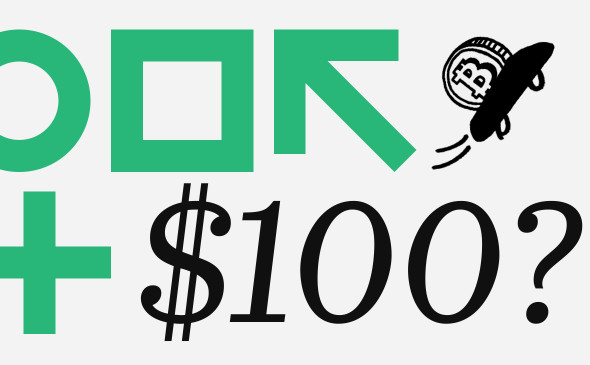What is technical analysis and why the investor needs it
Stock charts don't just show prices. With their help, some analysts and investors make trading decisions. Talking about how it can work
To trade on the stock exchange with profit, the investor must correctly answer three questions:
What to buy?
When to buy?
When to sell?
Technical analysis is considered to be one way to find answers to these questions.
What is technical analysis?
Technical analysis is based on the study and use of price charts.
The main idea of technical analysis: the price already reflects everything that can affect this action. Financial performance of the company, interest rates in the market, forecasts of analysts, market sentiment, insider trading and so on - all this has already been manifested in the price. Therefore, from the point of view of technical analysis, it makes sense to look only at the price movement.
There are two main areas in the technical analysis:
1) Recognizing the characteristics of shapes or patterns;
2) Using indicators.
What are shapes?
Adherents of such a line of technical analysis as recognition of shapes, believe that price movements occur in typical. First of all, the charts give an opportunity to clearly see the direction of price movements - trends.
Support and resistance lines are also recognized on the graphs. These are the price levels below which prices cannot yet fall (support line) or above which they cannot rise (resistance line).
If the quotes overcome the lines of support and resistance, it usually indicates the emergence of strong supply or demand. In such cases, prices can continue to move steadily downwards or upwards.
There are many figures on the graph that can signal an impending price change. These are the so-called "head-shoulders," "hanging man," "hammer" and others. After these figures appear on the chart, traders using this direction of technical analysis begin to open or close positions.
What are indicators and how to use them
In the other direction of technical analysis, special tools are used - indicators. As a rule, the indicators give unambiguous signals to buy and sell securities. The indicators look like auxiliary charts that are calculated and drawn in addition to the price chart itself. They are drawn either on the basis of average prices or on the basis of changes in these prices.
Indicators can be depicted either next to the price chart, or in the form of an oscillator - a separate graph with a separate scale and in a separate window. Regardless of the way the display is displayed, the main task of the indicator is to smooth out, filter out random price fluctuations and more clearly identify and show the price trend.
The simplest and most reliable indicators, as shown by modeling, are moving averages. These are graphs based on average prices over the last few periods.
For example, a 20-day moving average is a graph that shows each point with an average price for the previous 20 days. Unlike the chart itself, the moving average is smoother.
If the price chart is consistently above the moving average, it indicates an uptrend. When the share price crosses the moving average chart from top to bottom, it can mean a possible change in trend.
One of the most common oscillators is the RSI, or Relative Strength Index. It compares price changes up with downward changes and is displayed on a scale of 0 to 100.
If the 14-day RSI is 30, it means that over the past two weeks the ratio of growth and decline in quotations has been 30 to 70. This speaks of a downtrend.
In this example, if the RSI indicator rises above 50, it means that prices on average have increased more than decreased. This indicates the beginning of an uptrend. Crossing the 50-level indicator - up or down - signals for buying or selling respectively.
What and when to buy or sell
In the technical analysis, entry and exit points from the action do not depend on the price level, but arise at a certain signal. For example, as we said, a direct signal to buy is given when the quote rises above the level of the moving average or the resistance level.
Using technical analysis, you can monitor several liquid securities. If the indicator of one of the shares indicated the purchase, then this paper is bought. You can even form a portfolio of several papers, following the recommendations of the technical analysis. The paper is sold from the portfolio after the appropriate technical signal. Some investors use technical analysis when trading only one selected high-profile Liquidity .
The pros and cons of technical analysis
This approach has two main drawbacks: false signals and lag. Charts and indicators of technical analysis already show history. They are built at previous prices, which also fluctuate greatly.
At the same time, if the indicators are set more sensitively, they will overreact to random price spikes and more often give false recommendations. If the indicators are set to catch only strong trends, they will give signals with considerable delay.
In the first case, the investor will have more both profitable and unprofitable trades. In the second case, there will be fewer unprofitable trades, but the size of the loss may increase. This will also reduce the size of rarer profitable trades.
On the other hand, technical analysis can work where fundamental analysis would recommend refraining from trading. For example, the EV/ multiplier Ebitda Tesla is significantly higher than the average for the auto industry. Focusing on fundamental multipliers Investors have long had to sell Tesla shares and not deal with them. And the indicators of technical analysis can show a steady growing trend of Tesla quotes and allow you to earn on this paper.
However, in some cases, while the adherents of the technical analysis will wait for signals from indicators, investors who follow the fundamentals, can buy cheap on all indicators of paper after the collapse of the market and earn on the same securities a large profit.




Comments
Post a Comment